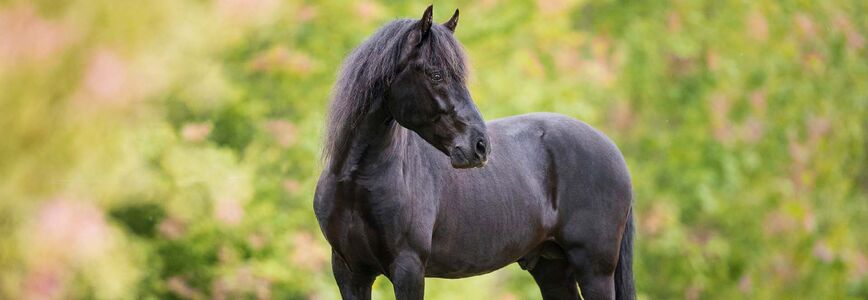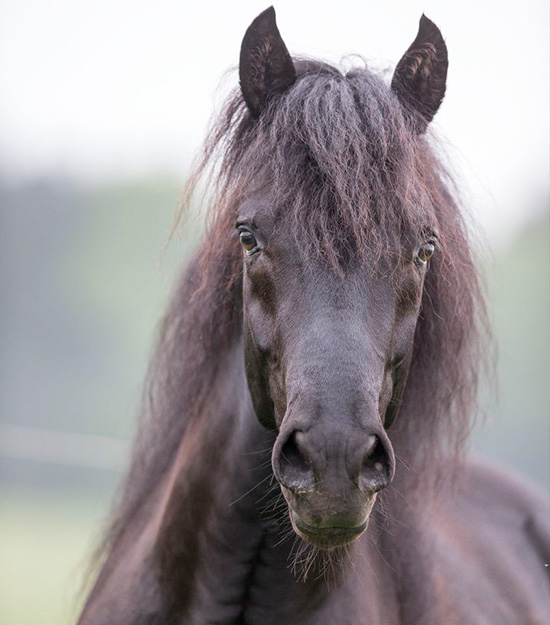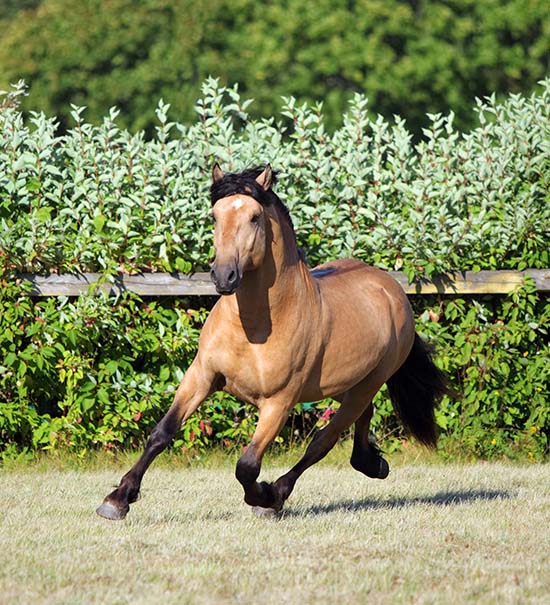
Paso Fino horses that have been present in Europe since the 1970s are capable of the rare tölt gait, among others.
Breed:
Paso Fino
Group:
small horses
Height at the withers:
140 - 155 cm
Appearance:
medium-sized head, straight profile, wide forehead and large eyes, erect, curved neck, short and muscular back, gracefully built but sturdy legs, lush long hair
Colour of coat:
all colours, rarely also dappled horses
Character:
sensitive, oriented towards people, eager to work, spirited but easy to lead
Gait:
energetic, sure-footed, lively, special ability: tölt
Origin:
Colombia, Puerto Rico, Caribbean
Prevalence:
South and North America, Europe
Suited for:
recreational and trail riding, show riding, “cow sense”
Did you know? The first Paso Fino horses came to Europe in the 1970s. Just like the Quarter Horses, they were imported by Jean-Claude Dysli, Kenzie Dysli's father. Kenzie plays the leading role in “CAVALLUNA – Legend of the Desert”. Her father Jean-Claude brought three Paso Fino mares and 15 Paso Peruano horses to Switzerland, which was the start of breeding these horses in Europe.

Jean-Claude Dysli – Kenzie Dysli’s father – brought the Paso Fino horses to Europe.
Paso Fino horses have two striking characteristics: They are capable of a fourth gait – tölt – and they have a particular temperament which is referred to as “brio”. Unlike most other gaited horses, e.g. Icelandic horses, they are trained especially in tölt. Paso Fino horses have perfected the fourth gait and they are known to be some of the most comfortable horses to ride. Their special gait is divided into three different types: Paso Corto, which is highly suitable for long rides in the countryside with a medium length of stride and a moderate pace. Paso Largo has a broader length of stride and a similar pace to galloping, and Classic Fino features a strong collection and hardly any length of stride. The latter is similar to tölting on the spot with very fast steps, similar to the piaffe for trot horses. There are only a few Paso horses with the natural tendency to performing Classic Fino. These are particularly valuable show horses. They are known as so-called “classic fino types”. Then there is the so-called “performance type”: spirited with a lot of charisma but not easy to ride, except for experienced riders. Horses of the so-called “pleasure type” that are especially calm and uncomplicated are perfect for recreational and trail riding.
But it’s the “brio” that makes Paso Fino horses really unique. The Spanish word is used to describe their character, which means that the animals are spirited but not difficult. They are also known to be highly motivated and oriented towards people. However, every Paso rider will say that “brio” is really difficult to explain – you have to experience it!

Their sure-footedness makes Paso Fino horses ideal horses for traveling.
It is often assumed that Paso Fino horses are closely related to the Paso Peruano, since they are both called “Paso”. This is true – but they are still two different breeds today. “De Paso” means “with gait”, and this refers to tölt. In fact, there are 21 different types of Paso horses that all have the same origin. Since breeding of these horses is relatively new and the breeding registers have not all been completed, these breeds cannot be clearly separated. The distinction between Paso Fino and Paso Peruano was made in the USA. Local breeders in the USA also named the horse breed from Colombia, Puerto Rico and the Caribbean Paso Fino. In South America, this is the name of the gait, meaning “fine gait”. Paso Peruano horses originate from Peru. They have a predisposition for tölt and for pace. In general, their gait is more expansive, and they have a particular way of moving the front legs: the so-called “termino”.
Paso horses originate from Iberian horses that were brought to the New World by Columbus. They are assumed to have been predecessors of today’s Carthusian horse, closely related to Andalusian horses, Genette horses, a gaited horse breed and Galician Berber horses, which are sturdy farming horses. Breeding of these horses was adapted to the individual needs of the people in the different regions of South and Central America. The sure-footed and easy-going Paso Fino horses were perfectly suited as transport and travel horses on difficult terrain. However, due to their elegant appearance, they were also considered a status symbol.